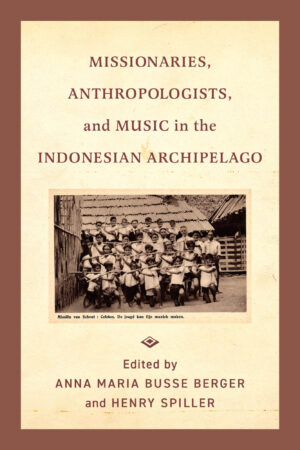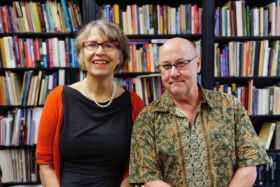Salvaging Indonesian Music from Missionary Archives
By Anna Maria Busse Berger and Henry Spiller, co-editors of Missionaries, Anthropologists, and Music in the Indonesian Archipelago
European Christian missionaries were once lauded as bringers of Western civilization to the backwaters of civilization. In the past century, however, they have gotten a bad rap for their part in the colonial domination of Africa, Asia, and the Americas. Nevertheless, the missionary archive (if such a thing can even be imagined as a unitary whole), contains boundless information that has otherwise been lost about those colonized cultures—language, customs, and music. Our book, Missionaries, Anthropologists, and Music in the Indonesian Archipelago, attempts to salvage (dare we say “redeem”?) some of this documentation of music and music-related activities from a variety of scattered missionary archives.

As we say in the introduction to the book: “the missionization of the Indonesian archipelago by foreign representatives of world religions has been going on for thousands of years and implicates Hinduism, Buddhism, Islam, and Christianity among other religions. It is difficult in most cases to separate exclusively missionary activities from other sorts of cultural interventions such as trade, invasion, and intermarriage. And it is misleading to imagine that each world religion is unitary; Hinduism, Buddhism, Islam, and Christianity are all characterized by multiple sects, some of which hold contradictory tenets. Thus, missionaries vary widely in their power, methods, and goals, as well as in their engagement with, opposition to, and sympathy for existing local cultures.”
Each of our fourteen contributors, who represent a wide variety of disciplines, tackles a specific situation and a specific kind of archive to reveal new information about the music history of the Indonesian archipelago. A couple of the essays (Sumarsam, Kathy Foley) address the effects of Hindu, Buddhist, and Islamic missions, which positions parts of the archipelago at the center of the Indian Ocean world. Other authors grapple with historical documents (David R. M. Irving and Estelle Joubert), Christian missionaries’ encounters with indigenous musics (Henry Spiller, Bernard Arps), the indigenization of Christian hymnody (Julia Byl, Emilie Rook, Philip Yampolsky), the overlapping roles of anthropologists and missionaries (David Hollinger, Dustin Wiebe, Anna Maria Busse Berger), and the place of archival documentation (Sebastian Klotz, Barbara Titus).
Some might think this project aligns with current efforts to push back on anti-colonialism, anti-fascism, and “woke” DEI initiatives. We maintain, however, that engaging objectively with missionaries on their own terms—and especially by interrogating the ways they sought to rationalize their appropriation and judgment of indigenous arts—can stimulate new dialogues about the overlapping historical impacts of colonialism, missionization, global modernism. Documenting, analyzing, and questioning the products and effects of colonialism—rather than simply erasing them—present opportunities to ameliorate the negative effects of so-called anti-woke initiatives.
